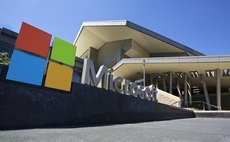Microsoft's response to Windows 10 Enterprise group policy privacy setting claims? Don't mess with the settings!
Microsoft has responded to claims that its Windows 10 Enterprise operating system is leaking information in direct contradiction of group policy settings - and potentially undermining the operating...
To continue reading this article...
Join Computing
- Unlimited access to real-time news, analysis and opinion from the technology industry
- Receive important and breaking news in our daily newsletter
- Be the first to hear about our events and awards programmes
- Join live member only interviews with IT leaders at the ‘IT Lounge’; your chance to ask your burning tech questions and have them answered
- Access to the Computing Delta hub providing market intelligence and research
- Receive our members-only newsletter with exclusive opinion pieces from senior IT Leaders























